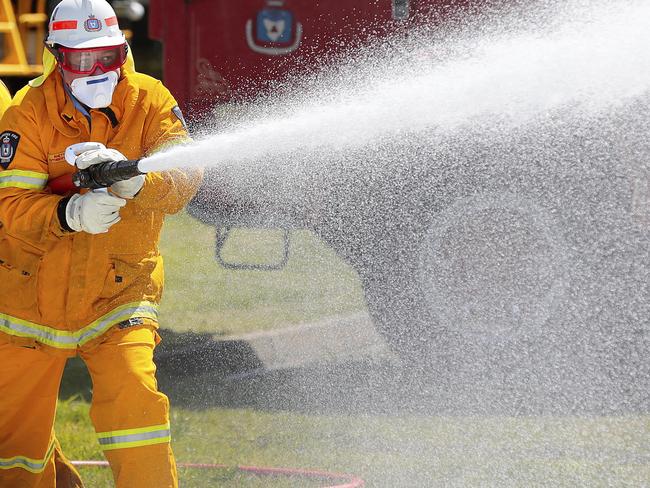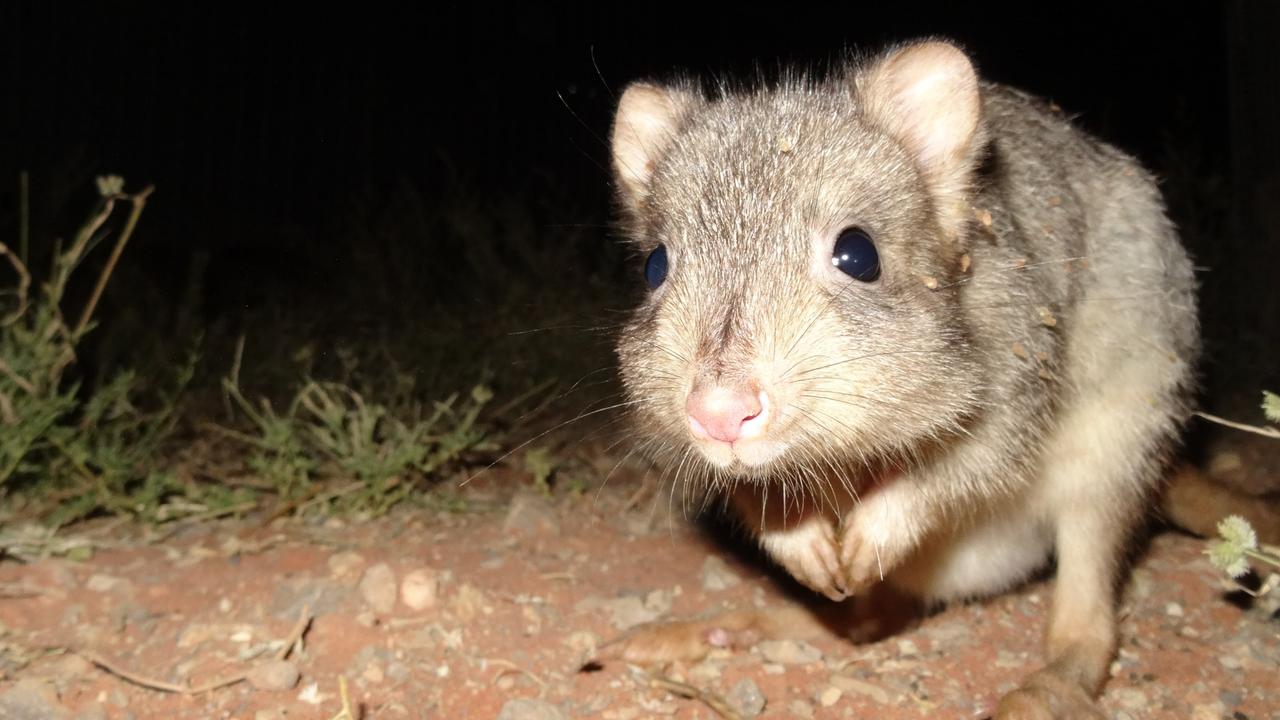Defence investigates claims cancer-causing toxins have leached into groundwater and on to properties surrounding Edinburgh RAAF base
FEARS that cancer-causing toxins have leached into groundwater and on to properties surrounding the RAAF base at Edinburgh have prompted a Defence Department investigation into site contamination.

SA News
Don't miss out on the headlines from SA News. Followed categories will be added to My News.
- Man admits to dumping 60 tonnes of asbestos-contaminated soil
- Adelaide groundwater contamination scandal spreads
- Company fined $28,000 for dumping petrol station soil in Hills
FEARS that cancer-causing toxins have leached into groundwater and on to properties surrounding the RAAF base at Edinburgh have prompted a Defence Department investigation into potential site contamination.
The department will take ground samples from the base to determine if the harmful chemicals — perfluorooctane sulfonate (PFOS) and perfluorooctanoic acid (PFOA) — are present. PFOS and PFOA were both used in firefighting foams at the air base until 2004.
A Defence Department spokeswoman said the foam was used to rapidly extinguish liquid-fuel fires.
She said the investigation into the Edinburgh base was launched after contamination was discovered at defence headquarters interstate.
“Defence understands that perfluorinated chemicals like PFOS and PFOA have been shown to be widespread global contaminants that can travel long distances,” she said.
“Current environmental investigations around RAAF Base Williamtown (NSW) and the Army Aviation Centre Oakley (Queensland) have detected PFOS and PFOA in groundwater.”
The spokeswoman said Defence had contacted the South Australian Environment Protection Authority, local councils and Renewal SA to advise them of the potential contamination at Edinburgh. It was also informing property owners near the base.
She said initial tests would be completed by the end of July, adding: “Subject to what is found (at the base), a detailed site investigation may follow.”
The firefighting foam currently used by the RAAF does not contain PFOS and PFOA.
An Environment Protection Authority spokesman said the Defence Department was taking the lead in the matter.
“The EPA has been informed of this work and has advised the Department of its requirements under the Environment Protection Act 1993 for any offsite work undertaken,” he said.
Salisbury Mayor Gillian Aldridge said she had “full confidence in the RAAF base to do what they need to do”.
“It’s far better to make sure it’s not happening than to find out it’s been happening,” Ms Aldridge said.
Playford Mayor Glenn Docherty said RAAF officials told the council they would keep it informed during the inquiry.
“If there’s any assistance needed by the Playford Council we would be happy to assist,” he said. “The RAAF base will keep us informed if there is any issue relating to land within the Playford council area.”
The Victorian Country Fire Authority’s Fiskville Training Centre was shut in 2015 after a cancer cluster — believed to have been caused by PFOS — was discovered among people who had lived and worked there since the 1970s.
The Victorian Government last month announced that it would pay compensation to those who had fallen ill at the centre. The toxins do not break down in the environment and are able to travel long distances in water and air.
According to the federal Health Department, the effects of the chemicals on humans is unknown.
However, it has warned that the public, and particularly pregnant women, should limit their exposure as a precaution.
The department says studies have suggested that prolonged exposure to relatively high levels of the chemicals may cause cancer in animals.
The department has created a website, defence.gov.au/id/PFOSPFOA/default.asp, to provide information about the investigations at the Edinburgh base and interstate. A hotline has been set up on 1800 365 414.
A silent, hidden menace
By Miles Kemp
PEOPLE in the vicinity of any potential contamination caused by harmful chemicals in firefighting foam should beware of a litany of risks that included dust and bore water, an expert has warned.
National Toxics Network senior adviser Dr Mariann Lloyd-Smith is an Australian expert on the United Nations international committee dealing with contaminations such as those left by the banned firefighting foam chemical PFOS and less common PFOA.
“On a scale of one to 10, PFOS is about a 9.5 because of its sheer persistence in the environment. It never degrades,’’ she told The Advertiser. “Dust in houses is especially dangerous, as is bore water and I would not be eating any seafood from dams or other natural water sources, or eating animals which consume grass.”

Dr Lloyd-Smith said PFOS was commonly used in Australia because the country had been slow to ban the product, best known to many middle-aged and older people as the active chemical in “Scotchguard” — which was used for waterproofing garments.
Quoting from a United States environmental study released on May 20, Dr Lloyd-Smith said PFOS exposure had been shown to affect “blood lipid and clinical chemistry profiles, thyroid effects, immune function, reproductive effects, pregnancy-related outcomes, foetal growth and developmental outcomes and cancer’’. She said: “Animal studies show PFOS causes testicular and pancreatic tumours.”
Dr Lloyd-Smith said Australia was already battling PFOS contamination cases, including in Darwin, a Country Fire Authority site at Fiskville in Victoria, and Williamtown RAAF base in NSW.
The Fiskville PFOS contamination is thought to have had the most effect on people, and is linked to unusually high rates of skin, testicular and brain cancer in the region.
As well as Fiskville and Williamtown, 14 RAAF and other Defence sites may have been contaminated, including Western Australia’s Pearce RAAF base, Victoria’s East Sale RAAF base and HMAS Albatross in NSW. At Oakey in Queensland, residents have been found with up to 40 times the national average of the chemical in their bodies and have started a class action. In 2014, Queensland firefighters tested had 6-10 times the level of PFOS in their serum as the general population.
Dr Lloyd-Smith predicted the Defence Department would be highly secretive about the chemical testing but called on it to release all results immediately so the public could have full disclosure about the potential harm.
She said there were other chemicals which were often found in firefighting foam that were even more dangerous than PFOS. Dr Lloyd-Smith is on the Stockholm convention’s Persistent Organic Pollutants Review Committee.
She said her work on the committee showed it was extremely important for the public to know whether the Adelaide contamination included the toxic chemical PFOA, which she rated as a 9.75 out of 10 for danger.
She said this was known to cause in humans increased risk of testicular and kidney cancer, thyroid dysfunction, gestational hypertension, pre-eclampsia, ulcerative colitis, rheumatoid arthritis, obesity, altered renal function, lower sex hormones, impaired neuro-development, memory impairment, reduced antibody response, reduced foetal growth in offspring and increased cholesterol.



